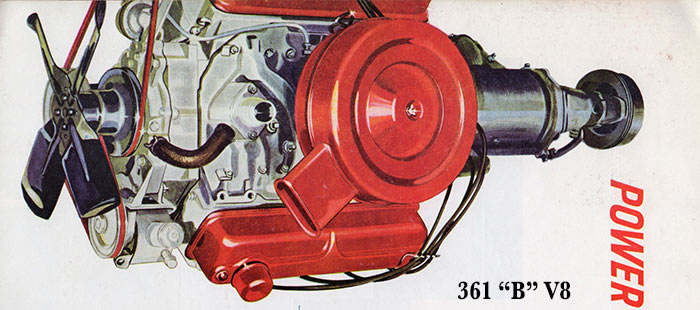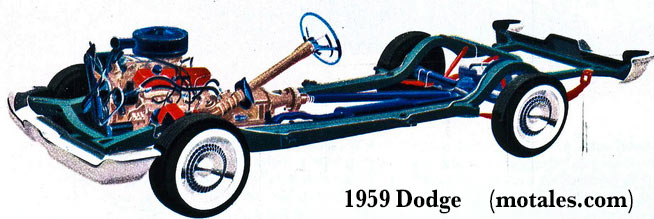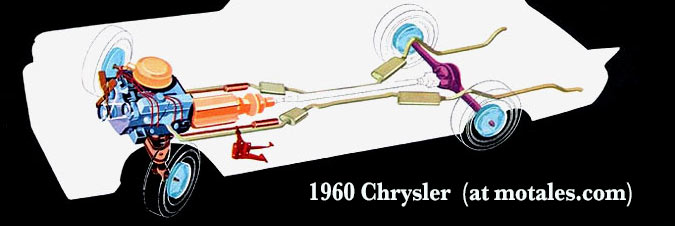Chrysler Corporation’s original Hemi series, developed at the end of World War II for their higher-end cars, were their first and for some time their only V8 engines. As customers demanded more power, engines meant for niche cars made in limited numbers were suddenly needed for “lesser” brands and cars, and the old and somewhat overtaxed straight-six was no longer viable. Engineers worked to make their Hemi more amenable to mass production, creating the “poly” heads and automating block lines. That was all well and good, but they could only make these versions of the original Hemi so large—and GM and Ford both had bigger engines.
Chrysler needed a good, cheap, easily-mass-produced wedge engine with over 400 cubic inches, just like their competitors. In record time, the engineers created the “B” engine—a fine motor designed with a raised-block alternative in mind. This was a completely new design and the last totally new Mopar V8 from that point up to the 1999 “Corsair” 4.7 liter / 287 cubic inch V8.

The B-engines went into production at the Trenton Engine plant, starting with 350 and 361 cubic inch versions; they quickly added a 383 for the 1959 cars, created by increasing the bore of the 361.

Chrysler wanted something more, and the raised-block version of the B engine was put into production: dubbed RB, the new 413 cubic inch wedge-head engine went under the hood of the 1959 (and later) Chrysler New Yorker, Chrysler 300 “letter car,” and the Imperial. The 413 had more low-end torque than the Hemi 392, was 120 pounds lighter, and helped the 1959 Chrysler 300E to beat the 1958 Chrysler 300D’s 0-60 time by over one full second.
Making the 413 caused an odd problem for Chrysler: their Trenton assembly plant had one line devoted to the B-series V8s, and another was set up for the RB. To move from making the RB to the B, they had to reset the line, losing valuable production time on a line in a plant whose output was essential to the company.

The result was having two 1959-1960 383 engines, one based on the B design and one based on the RB design. They could have made the RB engine with a slightly different displacement, such as 386 cubic inches, but they made them both the same, causing confusion later on. (In Canada, incidentally, where engines were mostly made in Ontario, Chrysler made do with the Dodge 383s, avoiding the problem; but they had around a tenth of U.S. sales.) One dealership employee of the time wrote that their chief mechanic “cussed every time a new 383 Chrysler went out the door.”

The RB 383 heavier than the B version, hurting performance slightly, but the longer stroke should have increased low-end torque. The power ratings were identical; whether this was based on testing or marketing is hard to know today. Many of the parts do not interchange between the engines, so long-term ownership could bring some minor headaches.
Overall, the company made around 100,000 “Golden Lion” RB 383 engines for the Chrysler Windsor and Saratoga. The 413 was standard on the other Chryslers and the Imperial. By the 1961 model year, Trenton engineers had figured out how to do fast line switches, and the RB 383 disappeared. The specs:
| 1959-60 | 383 B | 383 RB |
|---|---|---|
| Bore | 4.25 | 4.03 |
| Stroke | 3.38 | 3.75 |
| Horsepower | 325* | 325** |
| Torque | 425* | 425** |
* Gross figures, four-barrel carburetor, 1959 DeSoto Fireflite. The 1971 383, with a four-barrel carburetor, was listed as having 250 net horsepower and 325 net lb-ft of torque; most likely, by today’s standards, the ratings would be slightly lower, and a bad tune could take a sharp toll. The 1970 listings for the 383 four-barrel were 335 hp, 410 lb-ft.
** Gross figures, Chrysler Saratoga; two-barrel was 305/410.
Eventually, for the 1972 cars, engineers decided to switch the 383 to the same bore size as the other B engines (4.34 inches); the 383 thus gave way to the 400 cubic inch engine. They had actually planned to bring both B and RB engines to the same bore size. In any case, the Trenton plant moved on to make four-cylinder engines, then Pentastar V6 engines, and parts.
Copyright © 2021-2025 Zatz LLC • Chrysler / Mopar car stories and history.
YouTube • Editorial Guidelines • Videos